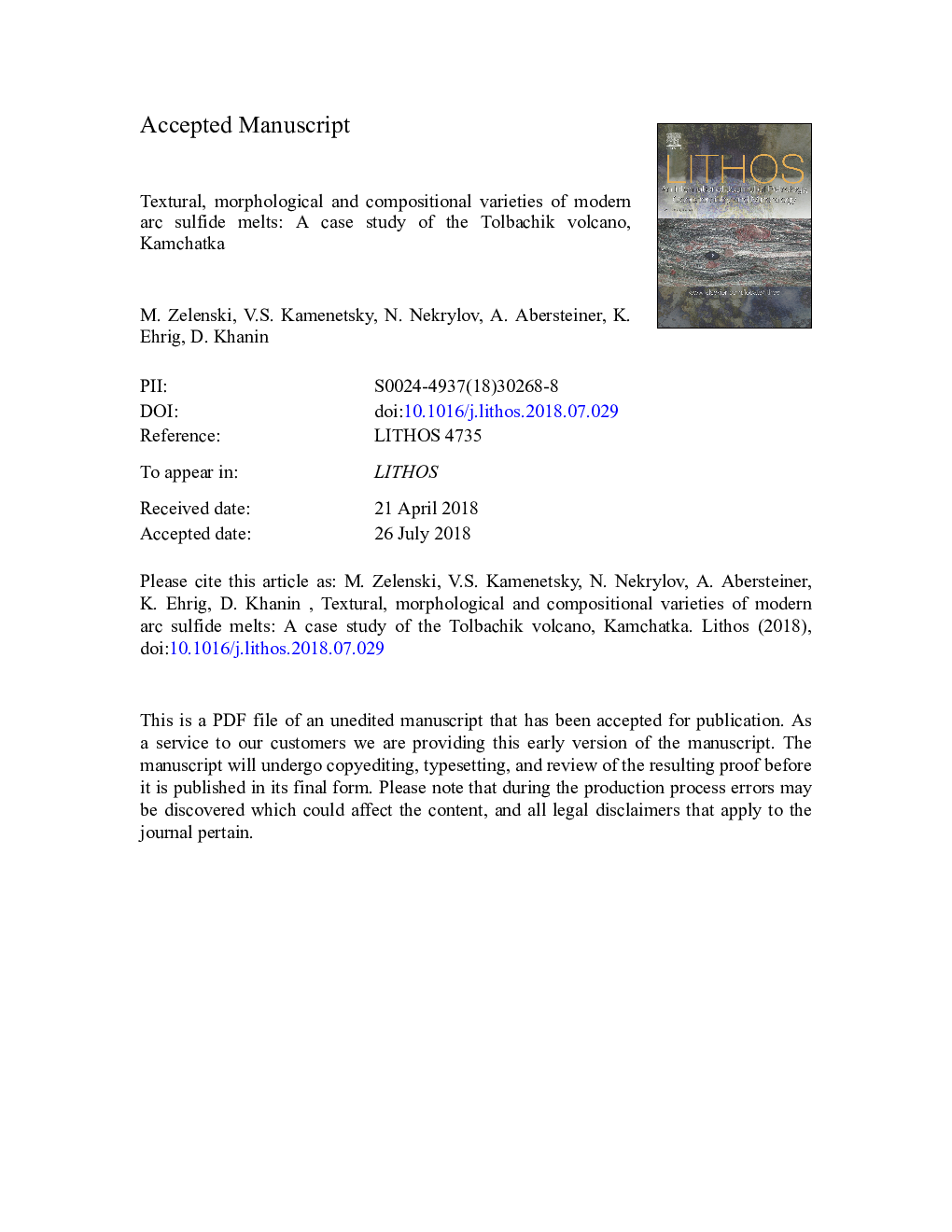| کد مقاله | کد نشریه | سال انتشار | مقاله انگلیسی | نسخه تمام متن |
|---|---|---|---|---|
| 8911492 | 1638615 | 2018 | 58 صفحه PDF | دانلود رایگان |
عنوان انگلیسی مقاله ISI
Textural, morphological and compositional varieties of modern arc sulfides: A case study of the Tolbachik volcano, Kamchatka
ترجمه فارسی عنوان
گونه های متنوع، مورفولوژیکی و ترکیبات سولفید های قهوه ای مدرن: مطالعه موردی آتشفشان تولباچیک، کامچاتکا
دانلود مقاله + سفارش ترجمه
دانلود مقاله ISI انگلیسی
رایگان برای ایرانیان
کلمات کلیدی
گلوبول سولفید، بازالت قوس تنوع متنوع، بلورسازی، خروج، اکسیداسیون و انحلال،
موضوعات مرتبط
مهندسی و علوم پایه
علوم زمین و سیارات
ژئوشیمی و پترولوژی
چکیده انگلیسی
Magma unmixing into separate sulfide and silicate melts is a key process in the formation of magmatic sulfide ore deposits. Sulfide inclusions in olivine preserve the original chemical composition of the segregated sulfide melt, whereas the phase compositions of the solidified sulfide droplets and their textures record the final stages of sulfide evolution. Sulfide globules hosted in olivine phenocrysts of magnesian basalts from the Tolbachik volcano (Kamchatka) display a variety of textures ranging from homogeneous to fine-grained to coarse-grained and lamellar. Porous textures and textures associated with the oxidation and dissolution of sulfides were identified as separate categories. The outer surfaces of sulfides vary significantly in shape, which includes normal spherical or elliptical globules, gravitationally layered inclusions, thin sulfide foils and concave deformed sulfides in contact with fluid bubbles. The estimated cooling rate of olivine phenocrysts responsible for observed crystallization textures varies by five orders of magnitude. The Fe:Ni:Cu ratio also exerts an influence on the resulting texture, whereas the size of the globules does not have any significant effect. The morphology and textural patterns of individual grains indicates that fine-grained textures resulted from the rapid breakdown of a homogeneous solid phase, which the sulfide melt solidified into during extremely rapid quenching. The presence of large or abundant small pores in sulfides, along with channels at the globule periphery indicates the separation of an appreciable amount of dissolved fluid from the sulfide melt during crystallization. Sulfides in the form of thin foils and planar swarms in healed cracks indicate cyclic pressure changes in the olivine environment, which resulted in phenocrysts rupturing and healing. The sulfide mineralogy is represented by high-temperature sulfides MSS (monosulfide solid solution) and ISS (intermediate solid solution), as well as pyrrhotite-pentlandite-chalcopyrite-cubanite-bornite-magnetite assemblages, which formed at lower temperatures.
ناشر
Database: Elsevier - ScienceDirect (ساینس دایرکت)
Journal: Lithos - Volumes 318â319, October 2018, Pages 14-29
Journal: Lithos - Volumes 318â319, October 2018, Pages 14-29
نویسندگان
M. Zelenski, V.S. Kamenetsky, N. Nekrylov, A. Abersteiner, K. Ehrig, D. Khanin,
